the portugal diaries, ep. 2: the volcanic wines of the azores
an Azores travel recap, a quick spotlight on the unique volcanic terroir, and a brief love letter to my favorite volcanic wines
We’re back babyyy. And today it’s to talk about one of the hottest topics slash concepts slash fandoms in the wine world — volcanic wines.
Now I’ve long (read: for 3 years) been obsessed with volcanic wines — everything from the transcendent Assyrtikos of Santorini to the spicy Nerellos of Sicily. But on my recent trip to Portugal, I was introduced to the wild world of wet weather wines from windy volcanic wastelands (say that three times fast) while spending a few nights in Ponta Delgada on São Miguel island in the Azores.
This inspired a little digging into volcanic wines in general — what makes them so great, how they differ, how they’re the same, and why the Azores wines were so good. What follows is the result — 1) a fun little travel recap of the Azores 2) An overview of the volcanic wines of the Azores and 3) a little science on what makes volcanic wines the way they are, with my personal editorialization thrown in as per usual (can’t avoid that, sorry luv).
This post is a continuation of my series of thoughts and reflections on a recent trip to Portugal and the Azores. To read the introduction and get some broader context to the trip, take a look at the first installation here:
the portugal diaries, ep. 1: colares
Much to everyone’s chagrin, I have once again returned from abroad, and naturally it has ~changed~ me. Yes, I feel you rolling your eyes at me through the screen. No, it will not stop me.
The wild, wet-weather wasteland
First, a little Azores travel recap.
One of the highlights (for the wrong reasons) was a buggy tour of the island from Ribeira Grande to Sete Cidades. Below are a few of the photos from this… experience… including one very misleading photo of my friend Cameron, midway through our buggy tour of the island. You can’t tell, but behind him is a ~500m drop off to the Atlantic ocean. You also can’t tell, but about 20 minutes after this picture was taken, the skies absolutely opened up and left us absolutely drenched for the 30 minute drive back to Ribeira Grande. After getting soaked, we had to drive our open air buggies at 35 mph through the rain all the way back to the starting point of the tour. Cue sitting in pools of water in the rental car and an extensive laundry bill from our Porto hotel.
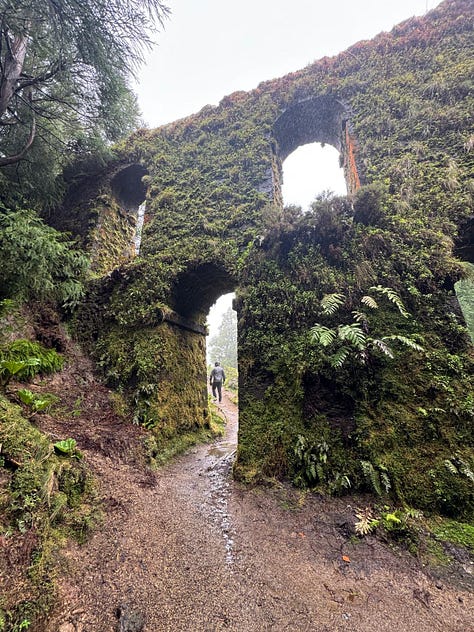

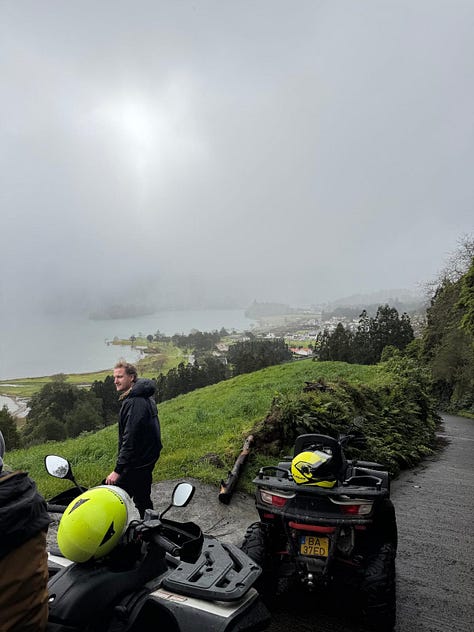
It wasn’t all rainy days though — we also managed to eat and drink our way through a good portion of the island. Our trip started with a visit to Cha Gorreana, the oldest and only tea plantation in Europe, and a tour of Plantaçao de Ananas, the Azores’ pineapple plantation. We also tried the famed cozido stew at the Terra Nostra Hotel and ate at many of Ponta Delgada’s delicious and surprisingly cheap restaurants.
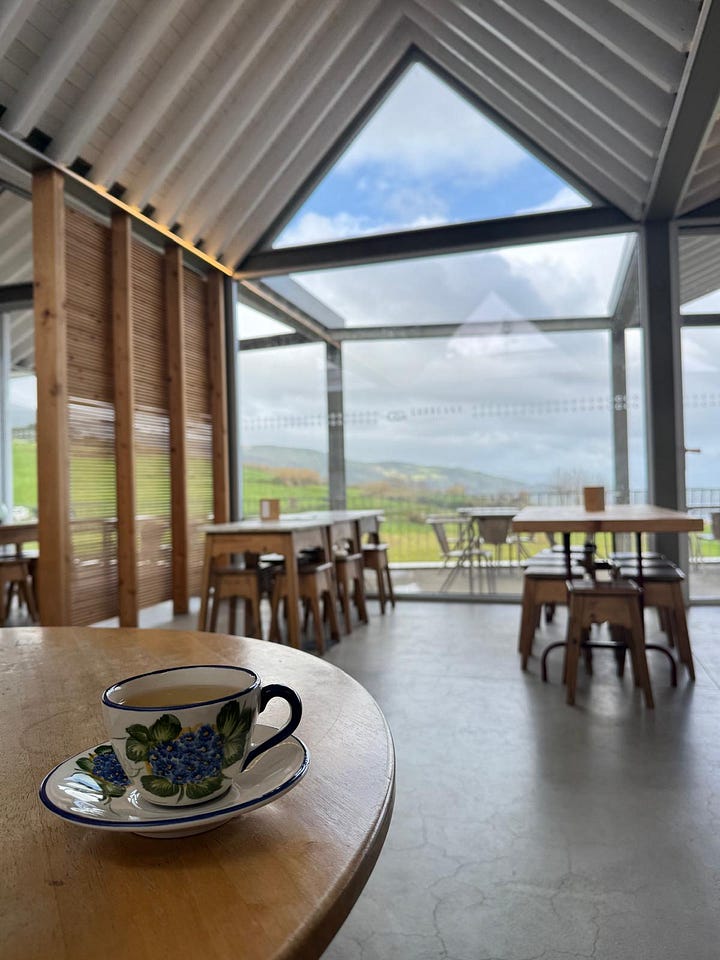


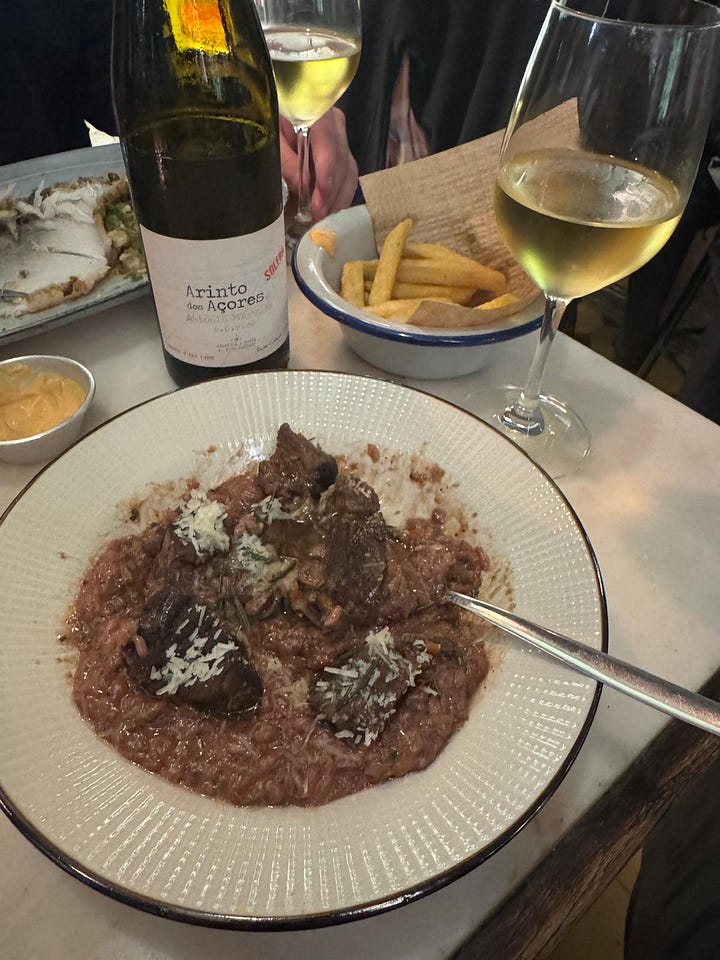
A couple learnings from our Azorean adventures:
Never trust the weather app in Sao Miguel. If that pathological liar says its sunny out and no chance of rain, you better bring an umbrella even if you’re just stepping out to the restaurant down the block.
You will not be able to keep your jaw from dropping at every twist, bend, and rise in the roads around São Miguel. The scenery is absolutely stunning and does not get old. I don’t make the rules.
Azorean drivers are masters of squeezing small manual cars into roads no bigger than a NYC railroad apartment. The scratches on the side of our rental Renault were absolutely already there beforehand (don’t look at me).
Azorean wine is truly something else. Many a writer has attempted to capture the experience of tasting Azorean wine in words. I fear I must add another attempt to the pile, but for those looking for more specifics on what to drink,
’s series on the Azores from about a month ago is a lovely deep dive that I wish I had read before I visited!
As you might imagine, it’s the last point on Azorean wines that leads us into our discussion today on volcanic terroir - let’s jump right in.
Pico Island
When we talk about Azorean wine, we are referring mainly to Pico Island — an island I didn’t even get the chance to visit while in the Azores, but one that produces an estimated 85%+ of Azorean wine.
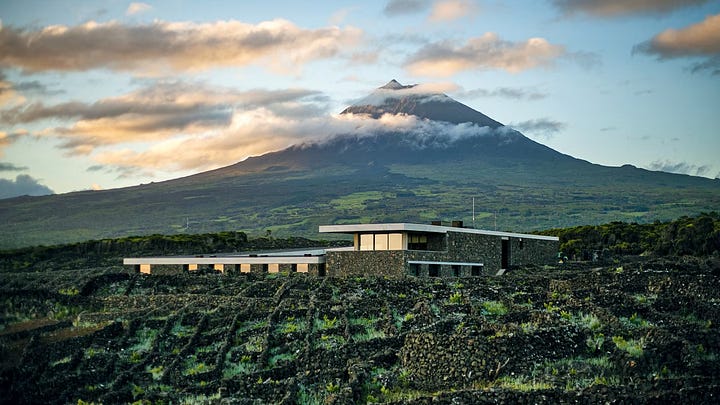
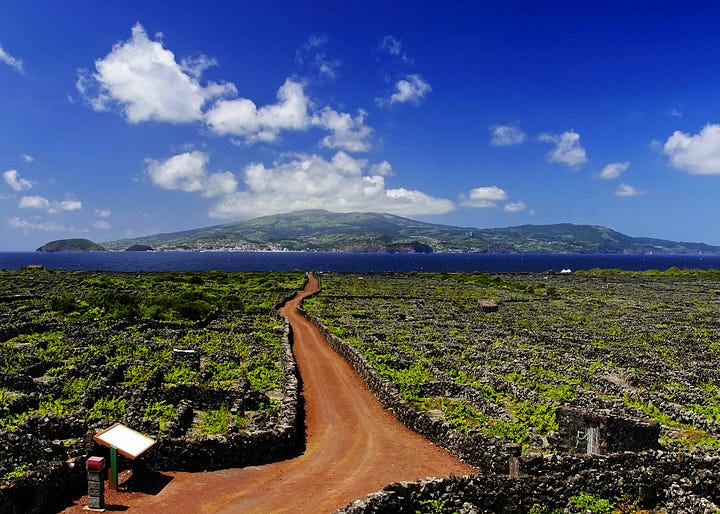
Pico is stunning (at least these pictures suggest it is, idk I’ve never been). Geologically, it’s the youngest island in the Azorean archipelago; physically, it’s one of the largest with the tallest mountain in Portugal (Mount Pico), a dormant stratovolcano that last erupted in 1720; vibe-oligically it’s just cool-looking.
Winemaking on Pico has to contend with a dizzying array of climatic and agricultural hazards that are all too common for the Azores:
Extremely high winds — gusts that can reach 50+ mph in windspeed, requiring the construction of basalt rock stone walls called curais around sections of the vines to retain heat and prevent wind from damaging vines
Ocean influence — appreciated for lending a unique “salty” flavor to the wines, but also for literally depositing salt onto grapes planted close to the water’s edge through ocean spray and making irrigation impossible
Notoriously poor soil — generally a good thing for grapes (very fertile soil can create poor-quality grapes and too much development of the plant’s green parts), but taken to the extreme on Pico, where vines are often planted directly into fissures in dried basalt rock lava flow
All of this is secondary to (or a direct result of) the main geographic and climatic determinant of the region — the volcanic terroir. Terroir is a notoriously difficult term to define and Pico island illustrates this fact perfectly. Not only is the literal volcanic soil a result of four historical eruptions of three different volcanic systems, but the volcanoes themselves create microclimatic effects on rainfall, wind, fog, heat retention, sunlight exposure that also vary in each zone. Beyond the climatic, the history of civilization on Pico Island has been heavily influenced by the viticulture, forming unique traditions around winemaking that persist to this day. All of this together is what I mean when I say “volcanic terroir” — and there’s probably even more that I’m forgetting.

Some impacts of this volcanic terroir on Azorean wine:
Well-draining soil — The Azores receive a staggering average of 79 inches of rain per year. This is 2-3x the amount that heritage wine regions like Napa and Bordeaux, and even more than historically wet and rainy regions like northwestern Spain’s Rias Baixas, which averages around 60 in/yr. Rias Baixas in particular has even developed a unique system of vine training on wooden trellises above the ground to avoid excessive moisture from rain ruining the grapes. Azorean vines, on the other hand, survive being planted directly into the ground thanks to the unique basaltic rock all over the island that drains water through it like a fishing net in a rainstorm.
High in minerals and heat-retentive — The black basalt soil created by extensive dried lava flows and ash deposits is high in magnesium, iron, and other minerals, allegedly lending a certain mineral structure and quality to the wine (although not scientifically proven). The dark soil color also attracts sunlight and retains heat, warming the grapes in the otherwise cool Atlantic air and contributing to a longer growing season (actual science confirmed).
Fog, fog, and more fog — The prominence of Mount Pico on the island creates temperature variance that causes an almost ever-present island mist. This limits heat in the warmest months, preventing grapes from ripening too quickly and losing acidity, and retains warmth in the fall months, ensuring grapes get enough heat to ripen fully.
Indigenous grapes — The remote, Atlantic island boasts indigenous grape varieties like Verdelho, Torrontez do Pico, and Arinto do Açores that have evolved separately from similarly named varieties (Verdejo, Torrontes, and Arinto) and qualify as their own grape varieties in the wine community. In addition to a novelty aspect, these varieties also boast new aroma and flavor combinations, pronounced acidity and aromatic intensity, and deep winemaking traditions across the islands of the Azores.
this article is becoming more of a listicle at this point. pls excuse the rapid buzzfeed-ification of my prose. I promise I do write in full paragraphs occasionally. no, this has nothing to do with my degenerated attention span, there’s just so much to talk about.
The end impact on flavor of all of these factors of volcanic terroir is:
Intense flavor concentration — A result of the high flavor-compound-to-water ratio in the grapes formed by well-draining soil at low pHs
High acidity — A result of the temperature moderation from fog and the long growing season of the moderate Atlantic climate
Pronounced, unique tasting notes — Salt, smoke, flint, wet stone, and herbal notes are common in both the Azorean whites and reds — combinations hard to find elsewhere
An important caveat
Before you go to your local wine store and ask them for a volcanic wine, it’s important to know that not all volcanic wines are created equally.
Like all things in wine, trendy categories can quickly devolve into marketing gimmicks (read: natural wine, orange wine). While not quite to the same extent, wine industry folks have certainly taken advantage of the opacity of the wine industry and the relative lack of consumer education to hawk alleged “volcanic” wines as a unique differentiator when it may not play as large a role as alleged.
The truth is a many of the world’s wine regions have some degree of volcanic soil — parts of Howell Mountain in Napa, the Dundee Hills in the Willamette Valley, and even some areas of the Medoc and Saint-Emilion in Bordeaux. The difference is that in most cases, their volcanic soil is ancient — the last eruptions occurred thousands or even hundreds of thousands of years ago — and the volcanic soil has heavily mixed with other, non-volcanic soils over time due to erosion, precipitation, and wind. These wines may be subtly influenced by volcanic soil, but not nearly enough to create recognizable differences. I’d argue that a lot these do not truly qualify as volcanic terroir wines.
Volcanic wine regions that will always have my heart (we’ll never be worlds apart)
So which wines and regions should you look for if you want a taste of volcanic terroir? Here are a few categories that have particularly rocked my world. Producer quality here matters a lot, so you’ll notice that all of my volcanic buys here have come with help from those who have done the filtering for volcanic terroir impact already. The fun side effect is that they now also come with a restaurant or wine bar recommendation — what can I say, Gen Z do love a good experience.
Arinto dos Açores — The newest add to my personal list, and one of the main protagonists of Pico wines. Not much more to be said except that this is such a cool, unique white wine. Most likely found in the U.S. through some winery variant of Antonio Maçanita’s, or otherwise vaguely connected to the Azores Wine Company. If you see them, buy it. Had my favorite at Louvre Michaelense in Ponta Delgada, but can also be found on some Portuguese wine lists in NYC.
Assyrtiko from Santorini — Assyrtiko is one of Greece’s rockstar grapes and the white grape that arguably put Greek wine back on the broader map over the past few decades. It’s now cultivated throughout Greece, but one of the heritage producers (Sigalas) is based on the island of Santorini, a half-collapsed volcanic caldera in middle of the Aegean. Their Assyrtiko vines are cultivated into kouloura, or low, circular wreaths of vines, to protect the grapes that grow in the middle from the harsh winds that batter the volcanic plains they grow on. I had the all too awesome pleasure of visiting Santorini far before the age when it would be acceptable to try these crunchy, salty, citrusy wines (I was like 10), but I will happily shout out Krasi and their Wednesday Wine Symposiums for introducing me this all time fave. Might just have to do a piece just on Assyrtiko some day.
Aglianico del Vulture — Aglianico is the famed black grape from southern Italy, probably best known under the Taurasi DOCG label, which can produce some stellar concentrated red wines. I’m partial, though, to the Aglianicos from the larger Mount Vulture region nearby that are a bit easier to get ahold of, have shorter ageing requirements, and show a bit more of the aromatic, high acid, structured volcanic style. I particularly fell in love with this wine after ordering a bottle of it at SRV, one of my favorite Italian restaurants and wine lists in Boston.
Etna Rosso — Sicily has been all the rage for several years, and not just because of White Lotus Season 2. Sicilian wines, especially those centered on the high-altitude, black volcanic soil of the most active volcano in Europe, have also played a big role. Etna Rosso in particular, typically made from a blend of Nerello Mascalese and Nerello Cappuccio (among others), is a standout for me. The wines are powerful but not heavy — punchy red fruit, spices, and firm but integrated tannins. Funnily enough, also a shoutout to SRV for this one. Maybe I should be getting a kickback for this article.
Closing thoughts
If you have been thinking about visiting the Azores, I would highly recommend. Despite my adversarial relationship with the island’s weather forecasters and harrowing experience with one particular dune buggy tour guide contractor, the scenery was breathtaking, the people were welcoming, and the food and wine truly reflective of a real sense of place.
More importantly, in a world of wine that can seem like a lot of the same, Azorean wine permeates the Pico island mist of the wine aisle and delivers wines with piercing clarity and uniqueness. Ultimately, they prove that some things are truly worth weathering the storm.




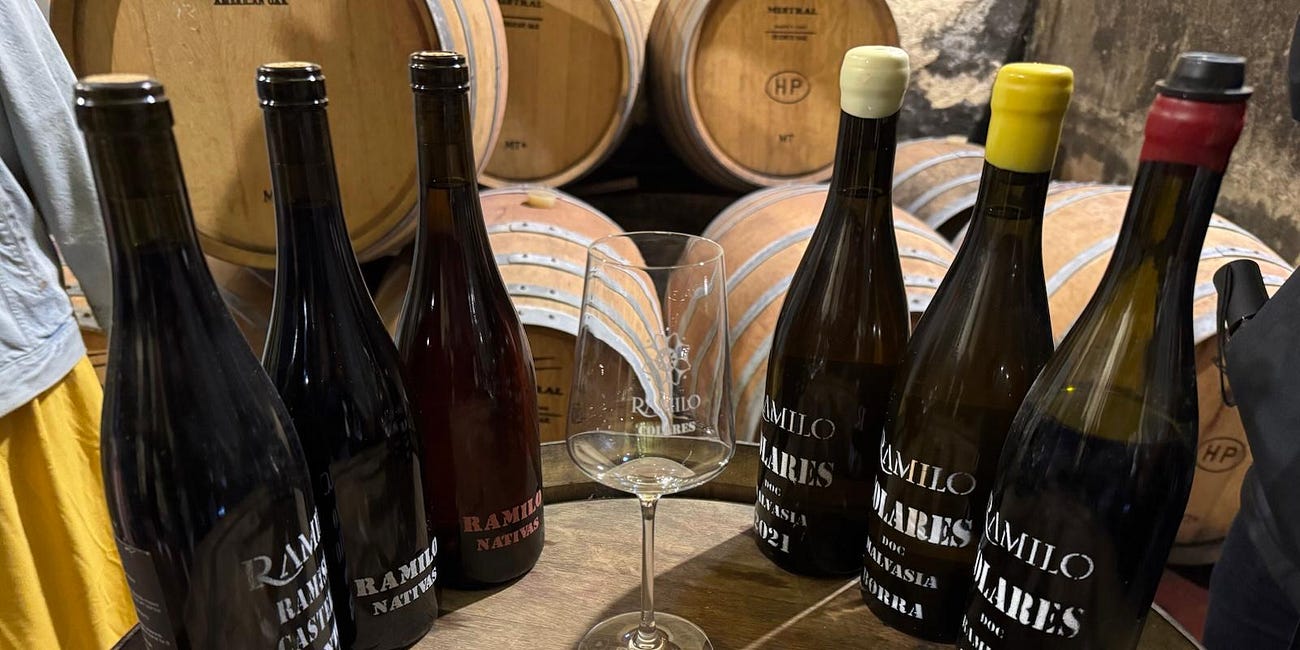

the power of fog!!! i'm coming to next wine trip
Glad you enjoyed the Azorean wines as much as I did! But jeez, yes, that weather... unpredictable is the understatement of the century!